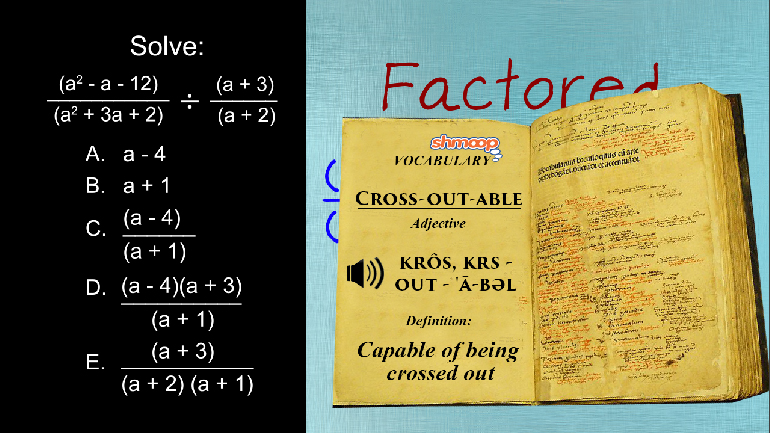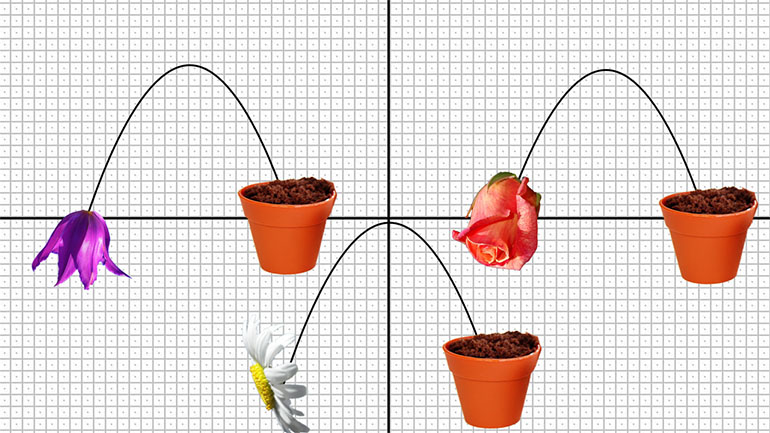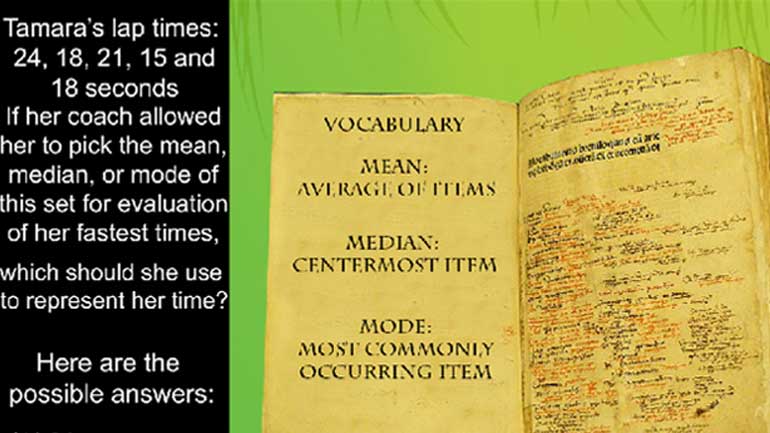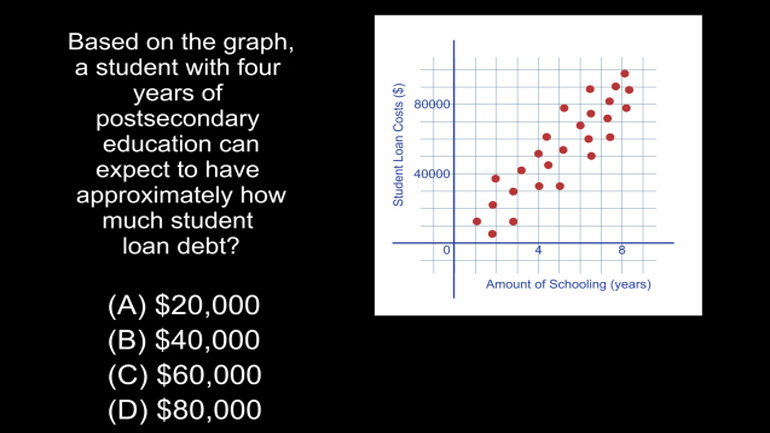ShmoopTube
Where Monty Python meets your 10th grade teacher.
Search Thousands of Shmoop Videos
Algebra I Videos 81 videos
Approximately 874 people per day wonder what a unit rate is. If you're one of them, check out our video on unit rates and how to use them. (We just...
This video covers how to use cross products to solve for a missing number in a proportion by setting that proportion with a variable over the produ...
GED Math 2.4 Rational Numbers. Lucius's favorite restaurant is how many km from his home?
CAHSEE Math 5.2 Statistics, Data, and Probability II 176 Views
Share It!
Description:
Statistics, Data, and Probability II Drill 5 Problem 2. Based on this data, a student who had missed 10 days of school can expect his GPA to be about what?
Transcript
- 00:03
Here’s your shmoop du jour...
- 00:05
Edgar, student at Duh University, has made a shocking, controversial claim –
- 00:10
that more time spent in school means better grades.
- 00:15
He may just be a student by day, but by night… Edgar is… CAPTAIN OBVIOUS!
- 00:21
Anyway, he conducted a survey asking students about the number of days that they were absent
Full Transcript
- 00:25
in a semester, and their semester GPAs were. The results are shown in the plot below.
- 00:30
Based on this, a student who had missed 10 days of school can expect his GPA to be about…what?
- 00:37
And here are the potential answers...
- 00:42
OK, so this question is testing whether we
- 00:44
know the difference between positive and negative correlations.
- 00:48
The basic idea is that if elements are positively correlated, they generally head in the same direction.
- 00:54
So... given NO OTHER DATA, if we just looked at this scatter plot of points, we’d surmise
- 01:00
that they generally drift south as we move to the right.
- 01:03
There is a clear ‘directionality’ to them. So we've got absences on one side and GPA on the other.
- 01:09
How much are they alike?
- 01:10
As we get higher in absences we have a LOWER grade point average – so in this case it’s
- 01:15
a pretty clear NEGATIVE correlation.
- 01:17
That is – more absences means lower grades.
- 01:21
If it had been more absences means HIGHER grades, we’d have the dots gradually sloping
- 01:26
UP instead of down… …and we’d have a whole lot fewer kids in school.
- 01:30
The answer is B.
- 01:32
As in… “Brains don’t work that way.”
Related Videos
CAHSEE Math: Algebra and Functions Drill 5, Problem 3. Solve the equation.
Statistics, Data, and Probability I: Drill Set 3, Problem 4. How many different avatars can be created based on the given options?
Statistics, Data, and Probability II Drill 3 Problem 2. Which two sports together make up for the preferences of more than half of all those w...
Statistics, Data, and Probability II Drill 3 Problem 3. One hundred twenty of those who were asked preferred what sport?





















































































